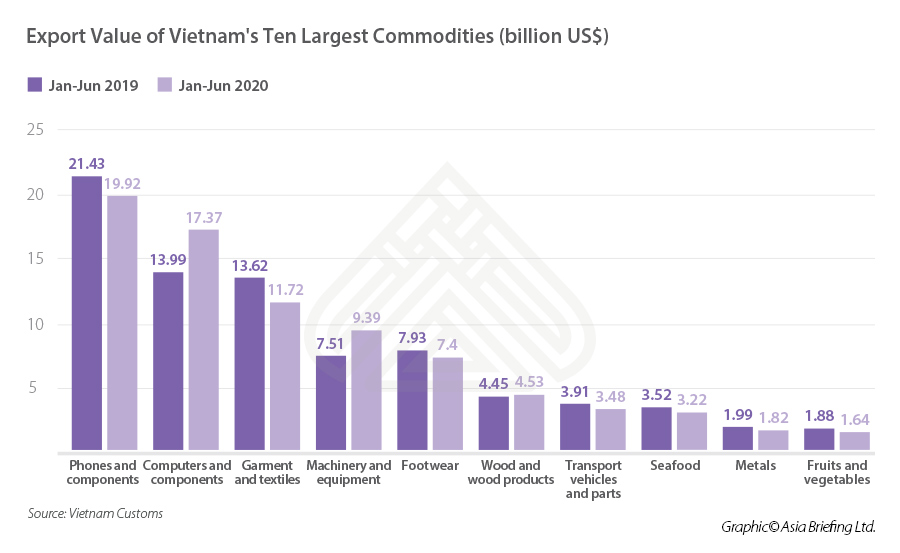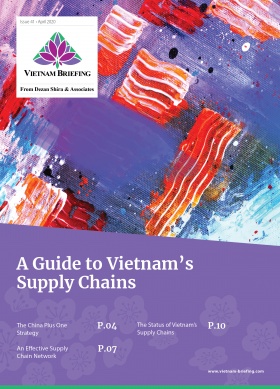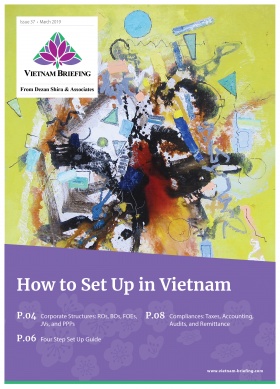FDI Data Shows Vietnam’s Steady Economic Growth
- Despite an overall year-on-year decline, Vietnam’s economic performance in the first nine months of 2020 shows that the country is well poised for a gradual recovery.
- FDI growth rates were sustained by continued interest in Vietnam’s industrial zones and the approval of major projects.
- Exports suffered, but some Vietnamese products are still in high demand.
Vietnam has garnered international praise for its swift and effective response to the COVID-19 outbreak. Although the country is not immune to the global economic downturn, its prospects for recovery remain positive and are the brightest among Asian countries. This view was also shared by the financial service firm UBS in a research note.
Vietnam’s economy shows positive signs
Data released by the General Statistics Office (GSO) estimated a 1.81 percent growth to Vietnam’s GDP in the first half of 2020. Despite being modest, these rates are encouraging considering that Vietnam is one of few countries that achieved positive growth during the pandemic. With business activities resuming normal operations, Vietnam’s economy is set to regain its momentum going into the second half of the year.
The government has targeted a 2 to 2.5 percent economic growth for 2020 with an aim of 6.5 percent in 2021.
The latest figures from the Ministry of Planning and Investment (MPI) give an overview of Vietnam’s performance in the first nine months of 2020.
Vietnam’s continued FDI growth despite pandemic
The pandemic certainly had a dampening effect on Vietnam’s previously record-breaking FDI growth rates. As of September 2020, foreign investment projects disbursed US$13.76 billion, which is equivalent to 96.8 percent over the same period last year.
As of September 2020, the whole country attracted US$21.20 billion or 81.1 percent compared to the same period last year of total newly registered capital, adjusted capital, and capital contribution or share purchase from foreign investors.
As with last year, Asian countries represent the lion’s share of FDI into Vietnam.
In the first nine months of the year, Singapore, South Korea, China, Japan, and Thailand were the top five investors by revenue. In terms of the number of projects, South Korea, China, Japan, and Singapore were the leading contributors.
China’s growing investment
Of particular note is China’s ongoing acceleration of its investment in Vietnam, which allowed it to rise from being the fourth largest investor last year to now the third by total capital and second by the number of projects. Despite the poor reputation of Chinese companies and tense Sino-Vietnamese relations, this trend may reflect Vietnam’s more pragmatic attitude towards attracting much needed private capital and foreign expertise.
The approval of major projects in early 2020, which were submitted and negotiated prior to the pandemic, heavily contributed to the increase in new investment and capital adjustment.
Industrial zones (IZs) across the country attracted US$6 billion in FDI in the first half of the year, with Bac Lieu, Ho Chi Minh City, and Ba Ria – Vung Tau leading in terms of share of capital commitment.
Bac Lieu leads the way
Bac Lieu province is the site of new a liquified natural gas-fired power plant, a project by Singapore’s Delta Offshore Energy Pte Ltd, worth approximately US$4 billion. This explains why the province accounts for 18.8 percent of total investment with only one project. Therefore, although the number of new projects decreased, the larger average size per project kept FDI growth afloat.
The sectors that received the most foreign investment in the first half of 2020 are manufacturing and processing, electricity, gas steam, air production and distribution, retail and wholesale, and real estate. With the exception of a surge in energy investment attributed to the Bac Lieu project, the ranking of the top sectors has largely remained unchanged compared to last year.
In Vietnam’s southern region, the country’s most important center of economic activity, industrial land prices surged in the second quarter of 2020. The average leasing cost reached US$106 per square meter; a 9.7 percent increase compared to last year. Thus, many companies and investors still have a strong interest in Vietnam’s industrial real estate market despite the pandemic-induced slowdown.
Digital technology and high-tech products contribute to increased revenue
Within the manufacturing industry, digital technology and high-tech products continue to be a major source of revenue for Vietnam even in the context of a global pandemic. In the first six months of 2020, phones, electronics, and computers were the top commodities in terms of export value and share.
Some of the major project investments in this period include China’s USI project to manufacture wearable electronic circuit boards in Hai Phong, Japan’s Furukawa Automotive Systems project to produce electric wires for cars in Vinh Long, and Taiwan’s Victory project to manufacture and assemble computers and other related parts.
Although these achievements are consistent with the government’s desired shift towards high-tech manufacturing, low-tech products such as garment and footwear are still among Vietnam’s top five exports.
The development of Industry 4.0 to support innovation has been identified as both a priority and a challenge. Recently, several major firms established their production and research and development facilities in Vietnam. At a domestic level, Ho Chi Minh City is planning to develop an AI strategy which includes establishing three innovation centers across the country.
After successfully producing 5G equipment, Vietnam announced that it will commercialize the technology in late 2020. Though ambitious, if well-executed these plans will certainly help the country enhance its competitive advantage.
Exports affected, but Vietnamese products still in demand
In the first half of 2020, exports dropped by 6.7 percent over the same period last year, totaling US$79.8 billion. A US$14.2 billion trade surplus in the FDI sector offset a 10.2 billion trade deficit in the domestic sector, which contributed to an overall positive trade balance of US$4 billion.
The effects of the COVID-19 pandemic are particularly acute for Vietnam’s export-reliant economy. Aside from computers and machinery, most of Vietnam’s top products registered lower exports in the first half of 2020 compared to the same period last year. However, figures indicate that these losses were relatively mild and that Vietnamese goods are still in demand.
Spurring economic activity priority for government
Conscious of the urgent need to get the economy back on track, the government has implemented a number of measures to encourage exports, investments, and consumption.
Vietnam can already point to several recent successes, such as the recent implementation of the EU-Vietnam Free Trade Agreement (EVFTA) and the EU-Vietnam Investment Protection Agreement (EVIPA) and the expected signing of the Regional Comprehensive Economic Partnership (RCEP) in November 2020
A new government decree announced that companies with revenues lower than US$ 8.8 million (VND 200 billion) will benefit from a 30 percent reduction in corporate income taxes in 2020.
The manufacturing sector returned to growth in September with Vietnam’s Manufacturing Purchasing Index (PMI) rising to 52.2 from 45.7 in August. A score of more than 50 indicates an expansion in manufacturing.
However, a focus on investment is not enough. According to the GSO, the urban unemployment rate in the second quarter of 2020 was 4.46 percent, the highest in 10 years. The pandemic also lowered the salaries and work hours of millions of people, putting them at risk of unemployment. Rising public debt and slow disbursement of support packages are also ongoing concerns.
Despite facing many challenges and uncertainties, Vietnam’s performance in the first nine of 2020 demonstrates that it has managed to weather the economic storm. Although the current crisis is far from over, Vietnam will continue to reap the benefits of its early containment strategy as it continues to lead the way into post-COVID recovery.
As noted by a HSBC report, Vietnam’s economy continues to grow this year will stand out as the fastest growing economy in the region in 2021.
Note: This article was first published in July 2020, and has been updated to include the latest developments.
About Us
Vietnam Briefing is produced by Dezan Shira & Associates. The firm assists foreign investors throughout Asia from offices across the world, including in Hanoi and Ho Chi Minh City. Readers may write to vietnam@dezshira.com for more support on doing business in Vietnam.
- Previous Article Vietnam Unveils Third Wave of Business Reforms: Resolution 68
- Next Article FDI-Daten zeigen Vietnams stetiges Wirtschaftswachstum








